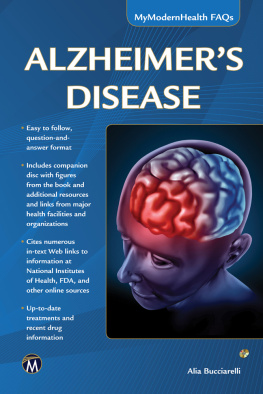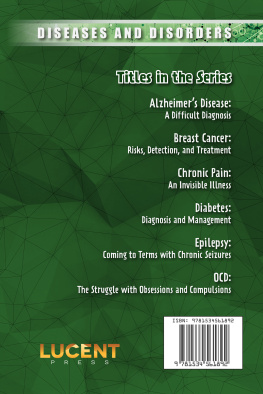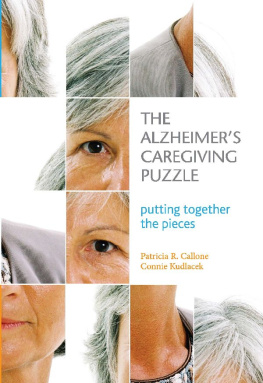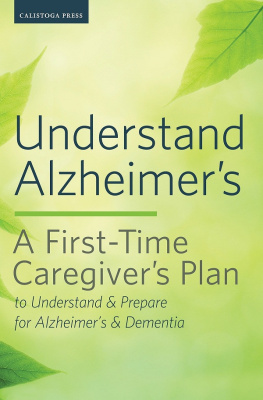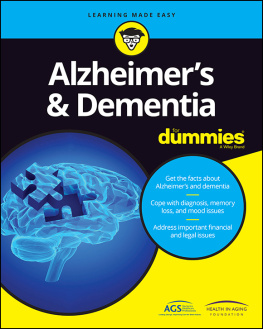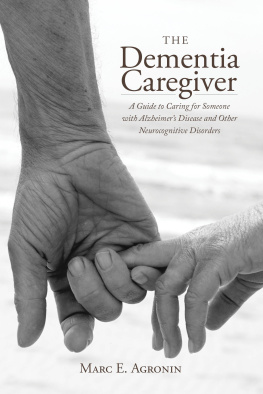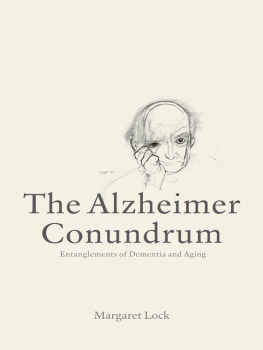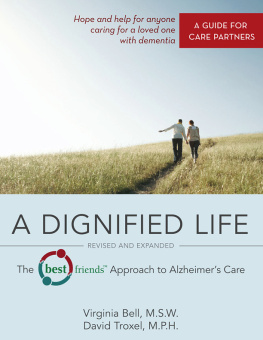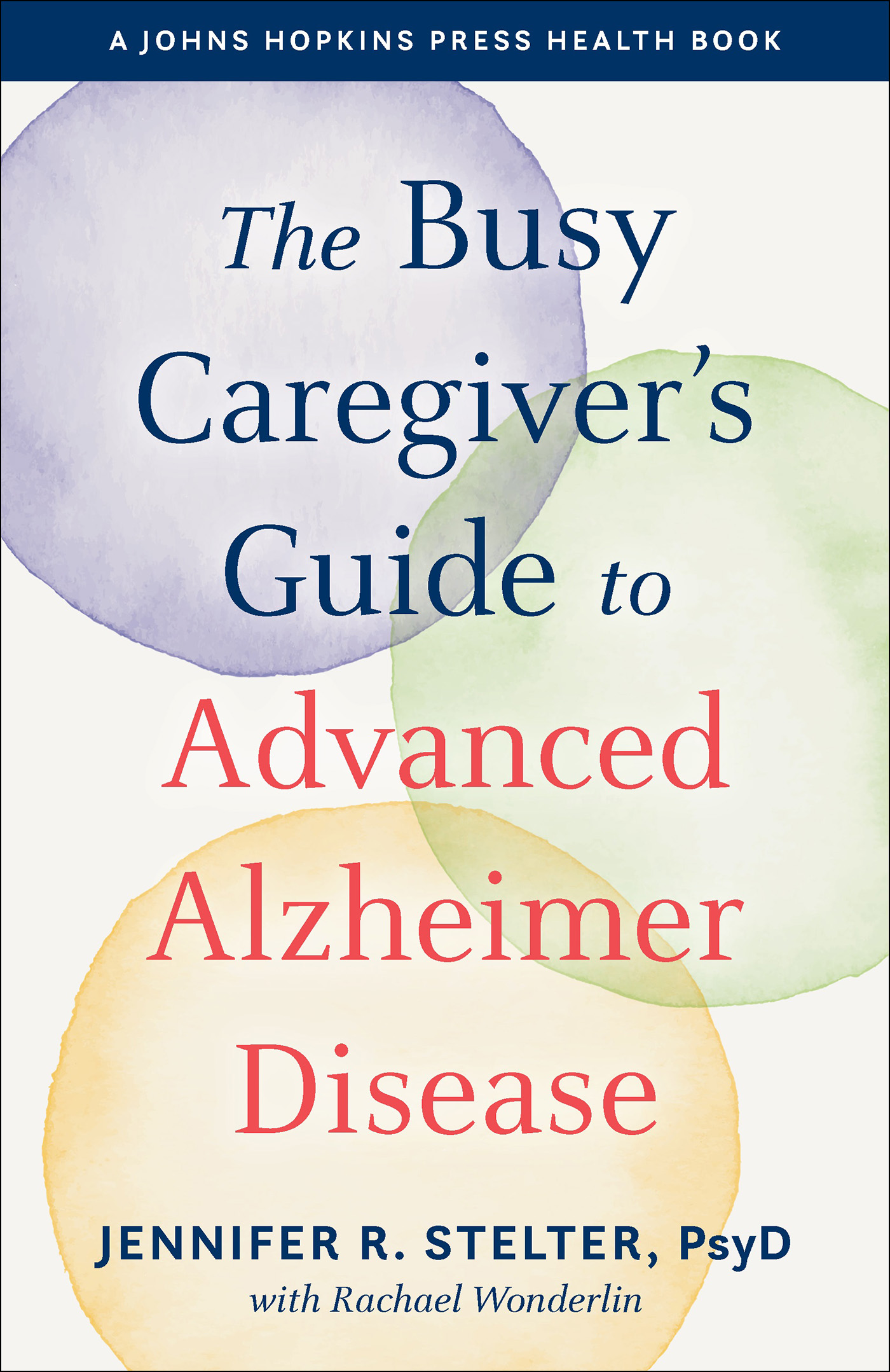Contents
Guide
Page List
The Busy Caregivers Guide to
Advanced Alzheimer Disease
A Johns Hopkins Press Health Book
The Busy Caregivers
Guide to Advanced
Alzheimer Disease
Jennifer R. Stelter, PsyD
With Rachael Wonderlin

JOHNS HOPKINS UNIVERSITY PRESS
Baltimore
Note to the Reader: This book is not meant to substitute for medical care, and treatment should not be based solely on its contents. Instead, treatment must be developed in a dialogue between the individual and their physician. The book has been written to help with that dialogue.
2021 Johns Hopkins University Press
All rights reserved. Published 2021
Printed in the United States of America on acid-free paper
9 8 7 6 5 4 3 2 1
Johns Hopkins University Press
2715 North Charles Street
Baltimore, Maryland 21218-4363
www.press.jhu.edu
Library of Congress Cataloging-in-Publication Data
Names: Stelter, Jennifer R., 1978 author. | Wonderlin, Rachael, 1989 author.
Title: The busy caregivers guide to advanced Alzheimer disease / Jennifer R. Stelter, PsyD, with Rachael Wonderlin.
Description: Baltimore : Johns Hopkins University Press, [2021] | Series: A Johns Hopkins Press health book | Includes bibliographical references and index.
Identifiers: LCCN 2020036318 | ISBN 9781421441078 (hardcover) | ISBN 9781421441085 (paperback) | ISBN 9781421441092 (ebook)
Subjects: LCSH: Alzheimers diseasePatientsCare. | Caregivers. | Dementia PatientsCare. | Alzheimers diseasePatientsFamily relationships.
Classification: LCC RC523 .S733 2021 | DDC 616.8/311dc23
LC record available at https://lccn.loc.gov/2020036318
A catalog record for this book is available from the British Library.
The images on pages 5 and 10 are from Peter Rabins, Is It Alzheimers? 101 Answers to Your Most Pressing Questions about Memory Loss and Dementia (Baltimore, MD: Johns Hopkins University Press, 2020). The images on pages 80 and 81 are from AdobeStock and iStockphoto.com, respectively. All other images are the authors.
Special discounts are available for bulk purchases of this book. For more information, please contact Special Sales at .
Johns Hopkins University Press uses environmentally friendly book materials, including recycled text paper that is composed of at least 30 percent post-consumer waste, whenever possible.
To my children, Jack and Julianna, who helped me
see the vision for this model. Because of them,
writing this book was possible.
Contents
Preface
In this book, I introduce you to a three-pronged approach to dementia care, known as the Dementia Connection Model. This model, for the first time, ties together three known concepts in the dementia care field: retrogenesis, habilitation, and sensory-based knowledge. The goals of this book are to be completely transparent about what can happen as the disease progresses, assist you in better understanding what your loved one is experiencing, and explain how to connect to them in a meaningful way. I want you to feel the win-win!
My adventure in writing this book started after years of studying, creating, and using the Dementia Connection Model with my patients. Im always in pursuit of the why? Why does this happen to us, why do the symptoms occur, why is there no cure, and so on. And not so much what happens as Alzheimer disease develops, because there is wonderful research out there supporting this information that should be reviewed. But more so of Why does mom act this way? or Why cant dad do this anymore? I know that in Western culture there is less pursuit of why things happen and more attention paid to treating symptoms, but Im not good with that. Im in pursuit of more. I truly feel that if a caregiver understands the why? they can then step into the shoes of the person they are caring for with this disease, setting them up for an impactful connection. An impactful connection leads to successful care.
Soon after using this model with my patients, I was teaching others to use it, and they found great success with their patients and loved ones. Their feedbackhow they wished they had learned this years earlier and how it truly helped them understand and move forward with effective strategieskept my motivation to continue to teach others and even to write this book to reach a larger audience.
The three prongs of the Dementia Connection Model are known in the health care industry, but this is the first time they have been put into practice together. The origin of the model, and first prong, is based on the theory of retrogenesis, that as dementia progresses, the individuals skills, experiences, and memories all go in reverse to birth. The research backing this theory finds that people experiencing the moderate to late stages of the disease have a developmental age of 7 years to 4 weeks old. Children in this age range experience the world differently compared to adults and learn through their senses rather than relying on factual knowledge, which helps explain why individuals with a progressed form of the disease experience their world differently than those around them. The second prong, habilitation, focuses on the abilities of those living with dementia rather than on their disabilities. We know that people with dementia can still feel emotions because we observe their mood changes early on in the disease; we also know that they will experience their world, both learning and engagement, using their senses more and more as the disease progresses. We will use these two nuggets to our advantage for connecting to our patients and loved ones. Lastly comes the intervention. The third prong is called sensory-based knowledge and information. We will use sensory stimulation methods to influence our patients or loved ones feelings in a positive way, similar to the approach we use with children, because they are taking in that sensory-based information through their senses to understand it. If the individual feels happy, safe, secure, and loved, they will connect more to the person providing this positive stimulation. Furthermore, if the person is positively reinforced each time, the likelihood that they will continue the positive behavior increases. On the other side, the person caring for them feels successful, confident, and at peace that their patient or loved one is happy and comfortable. Its a win-win!
This book is intentionally set up in a workbook style so that you can learn about this model and how it applies to common symptoms of dementia, allowing you to compare the symptoms your loved one is experiencing. Then, youll use the Dementia Connection Model with your loved one to see what works for them, journaling what was successful and building a toolbox of interventions to use.
This work reviews the basics about what dementia is and the common symptoms it involves. Unlike other books about dementia, however, this one goes into greater depth regarding why individuals with dementia experience their world differently than you and I and why they have the particular symptoms that go along with the disease. It then teaches you the hands-on approaches you can use every day. Not only will your loved one feel positive emotions when you are using this model, but you will feel positive as well.
Although this book does not cover the various forms of dementia, I have found that this model can very much be transferable when caring for those with other types. Just try it.


